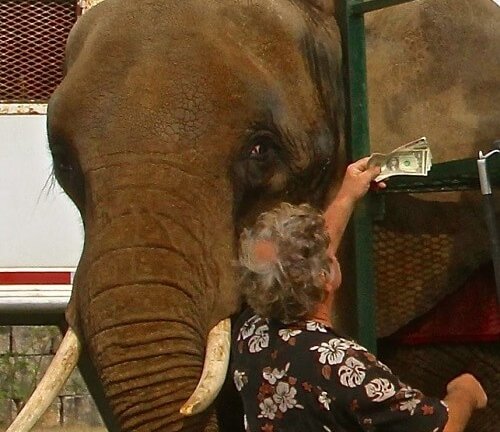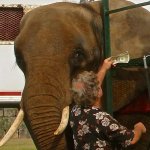What do elephants have to do with 16th century medieval reenactments? Not a thing. Yet, at Renaissance festivals across the country, they are forced to plod in endless circles, day after day, giving rides to paying customers.
When used on the fair circuit, elephants are chained inside tractor trailers and hauled from one venue to the next. They are trained through domination and punishment and live in fear of the bullhook—a long, heavy baton with a steel point and hook at one end that handlers use to strike and jab them in the most sensitive parts of their bodies. They learn to obey or get whacked.
Thanks to decades of field research, we know that elephants are highly social animals who live in matriarchal herds, protect and help one another, forage for fresh vegetation, play, bathe in rivers and share maternal responsibility for the herd’s babies. Every milestone, such as a new birth or the rainy season, is cause for celebration. They gather to grieve when there is a death in the family and have been known to visit relatives’ graves years after they have died. In the wild, they are active for 18 hours a day, walking up to 30 miles. This freedom of movement and social engagement are essential to maintaining their physical and psychological well-being. Elephants are exceedingly intelligent and need to use their brain power in multifaceted ways in order to remain engaged and healthy.
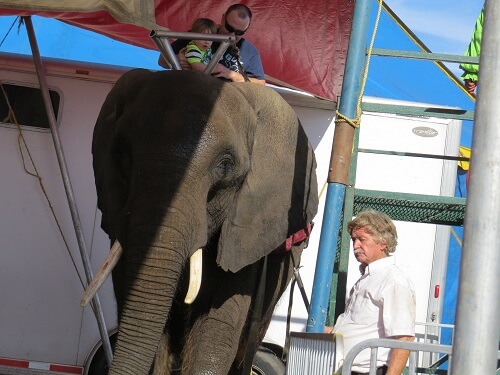
Nosey the elephant waits to give people rides under threat of a bullhook.
But in captivity, elephants’ complex emotional relationships are left in tatters. They spend their days swaying like mindless automatons to try to cope with the stress. Most develop painful and debilitating joint and foot problems and die decades short of their expected life spans.
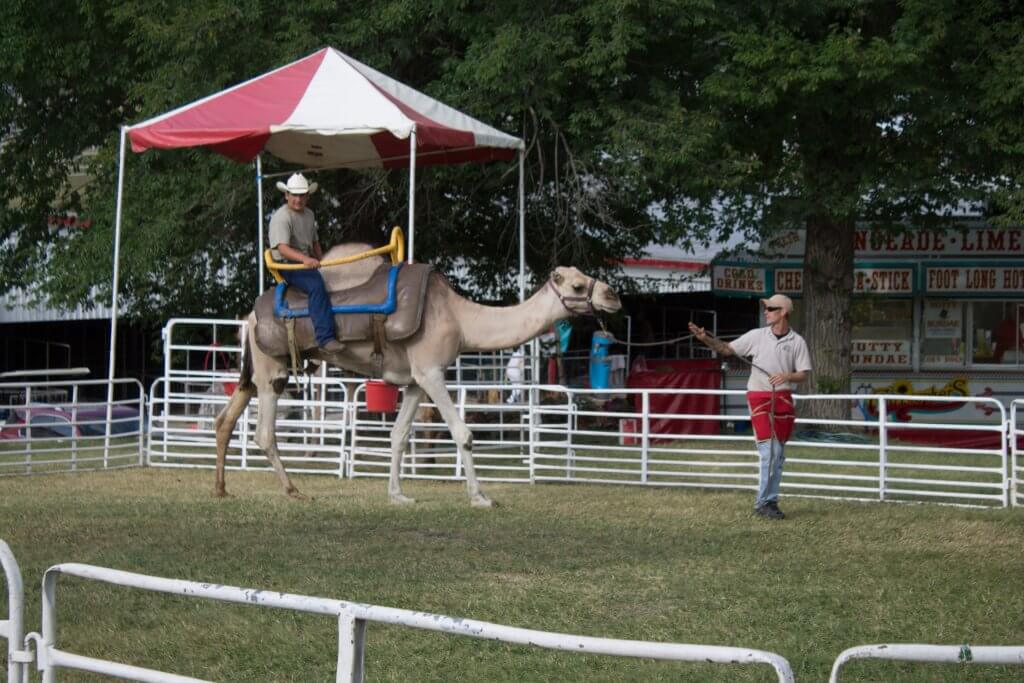
A camel gives people rides at a fair.
And it’s not just elephants who suffer at these festivals. Some of them also offer camel rides and even put caged tigers on display—as if either had any connection to a medieval theme. In the desert where they belong, camels live in social herds and spend their days roaming and foraging. When they meet, they often blow on each other in greeting. Mother camels are devoted to their babies, and they hum to one another.
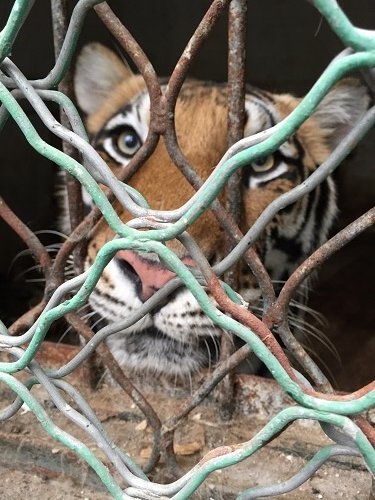
A tiger peers out of a cage at a Chinese circus
Lions and tigers shun contact with humans, yet when they are dragged around to be put on display at Renaissance fairs, they have no way of escaping the noisy, raucous crowds. Legally, these apex predators are permitted to be housed in cages in which they can barely move. The federal Animal Welfare Act requires only that a cage be “large” enough to provide for “normal postural and social adjustments.” In other words, if an animal can stand up, lie down, turn around and move a bit, that’s enough. That’s all that’s required, and in many cases, that’s all that’s provided.
Traveling from state to state, animals may spend days locked up in sweltering tractor trailers. Elephants are chained so tightly that they can barely move. Their world becomes a fetid stew of their own waste. Every interminable day is the same as the last. There’s no meaning, no fulfillment, no comfort, no joy.
Renaissance fairs have an abundance of entertainment options to offer their guests. But elephant and camel rides and exotic animal displays, which harm animals and have nothing to do with the history or the fantasy of medieval lore, have no business there. It’s time to relegate cruel animal shows to the Dark Ages.

